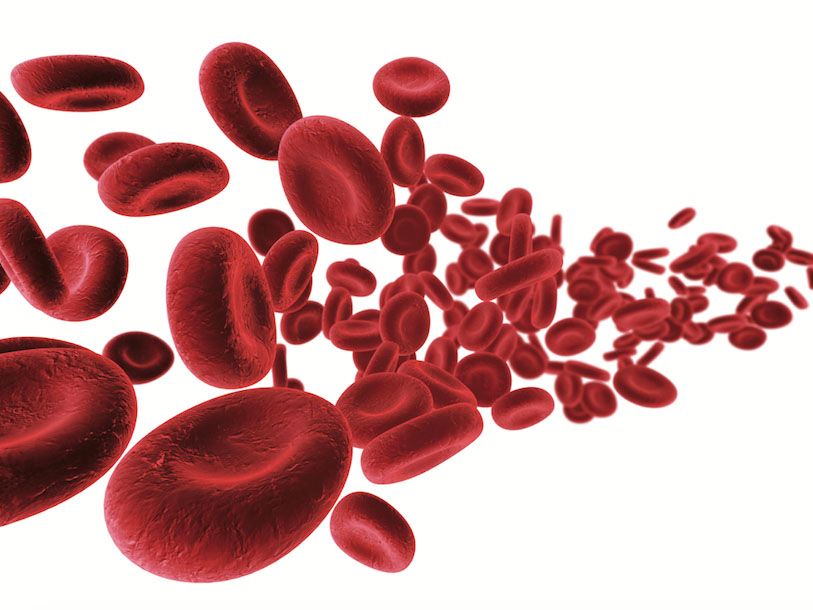Prexigebersen/Cytarabine Shows Early Activity in Elderly Patients With AML
The combination of prexigebersen, a Liposomal Grb2 Antisense oligodeoxynucleotide, and low-dose cytarabine was associated with an overall response rate of 47% in elderly patients with acute myeloid leukemia, according to findings from an ongoing phase II trial.

The combination of prexigebersen, a Liposomal Grb2 Antisense oligodeoxynucleotide, and low-dose cytarabine (LDAC) was associated with an overall response rate of 47% in elderly patients with acute myeloid leukemia (AML), according to findings from an ongoing phase II trial.
Bio-Path Holdings recently announced interim findings from BP1001-201, a single-arm, multicenter, open-label phase II study (NCT02781883) in a press release. The company is developing the neutral-charge, liposome-incorporated antisense drug, formerly known as BP1001, which is designed to inhibit the protein synthesis of Grb2.
The average age of patient age was 73.5 years. Bio-Path CEO Peter H. Nielsen noted that inducing such a strong response in older patients, which includes 4 complete responses, was unusual.
“We are very pleased with these encouraging interim data as they demonstrate the potential for the combination of prexigebersen and LDAC to effectively treat these [patients with] de novo AML. These early results are encouraging when you consider that the complete response rate in elderly patients [with AML] greater than 65 years of age on LDAC alone have been estimated to be only 10%,” he said in a press release. “We look forward to advancing the planned protocol amendments as we expect they will provide even better results for these patients suffering with AML.”
The company did not release safety details, but said that the combination was well tolerated.
Nielson added that the company plans to apply for regulatory approval in the United States and Europe pending the results of future trials. Investigators are currently evaluating prexigebersen for hematologic malignancies in ongoing trials and for solid tumors in preclinical studies. The company plans to initiate studies investigating the drug for lymphoma and solid tumors.
Investigators are preparing to enroll patients into the dose-determining segment of the Phase II clinical trial for prexigebersen in combination with dasatinib (Sprycel), the frontline therapy for chronic myeloid leukemia (NCT02923986).
The interim findings demonstrate the results of 17 patients with AML who cannot or elected not to be treated with more intensive chemotherapy. Investigators are evaluating the combination of 60 mg/m2of prexigebersen and LDAC versus LDAC alone for efficacy and safety in this de novo patient population.
The study had a pre-determined decision point at 19 evaluable patients in which the study would be terminated if less than 5 patients responded and the study would be expanded to 54 patients if 5 or more patients responded. The interim analysis was performed on 17 evaluable patients because criteria to move to the next steps in the study had been met.
Based on the recommendations of the principal investigators of the study, Bio-Path is amending the protocol and adopting the dosing schedule used in the phase I/Ib study of patients with relapsed/refractory AML. In that study, patients received a higher dose of prexigebersen prior to LDAC treatment starting at day 10. Previously, patients initiated LDAC treatment on day 4.
In results from the dose-establishing trial published in March inLancet Haematology, 27 of 39 enrolled patients were assessable for dose-limiting toxicity. From July 2010 to February 2016, patients were treated with a dose of prexigebersen monotherapy ranging from 10 mg/m2to 90 mg/m2.
Nine patients (33%) had a reduction of ≥50% in peripheral blood blasts from baseline while receiving prexigebersen monotherapy. A ≥50% reduction in bone marrow blasts was observed in 3 (10%) of 29 patients who had bone marrow blasts at the start of therapy.
Per investigator's assessment, seven (22%) of 32 patients attained benefit from prexigebersen monotherapy and had extended cycles of treatment. Among 7 patients receiving the combination regimen of prexigebersen plus LADC, 2 had a complete remission, 1 had a complete remission with incomplete hematological recovery, and 2 had stable disease with no dose-limiting toxicity. One patient died and 1 withdrew, both due to disease progression. One patient experienced a dose-limiting toxicity with mucositis and hand-foot syndrome which was considered to be possibly due to treatment.
All 39 patients were included in the safety analysis and researchers found that prexigebersen was generally well tolerated. Cardiopulmonary disorders (64%) were the most common grade 3/4 adverse events, followed by and fever/neutropenic fever and infections (44% each).
Reference:
Ohanian M, Ashizawa AT, Garcia Manero G, et al. Liposomal Grb2 antisense oligodeoxynucleotide (BP1001) in patients with refractory or relapsed haematological malignancies: a single-centre, open-label, dose-escalation, phase 1/1b trial.Lancet Haematol. 2018;5(4):e136-e146. doi: 10.1016/S2352-3026(18)30021-8.
Two patients (5%) experienced grade 5 cardiopulmonary disorders, 2 each experienced fever/neutropenic fever and infections, and 1 patient experienced multi-organ failure.